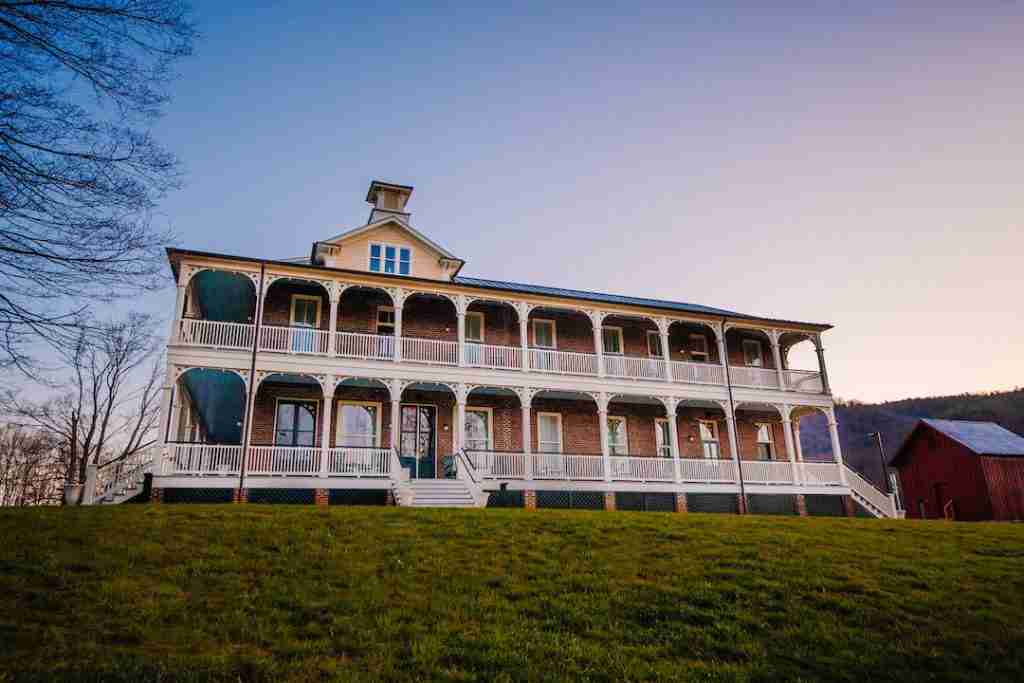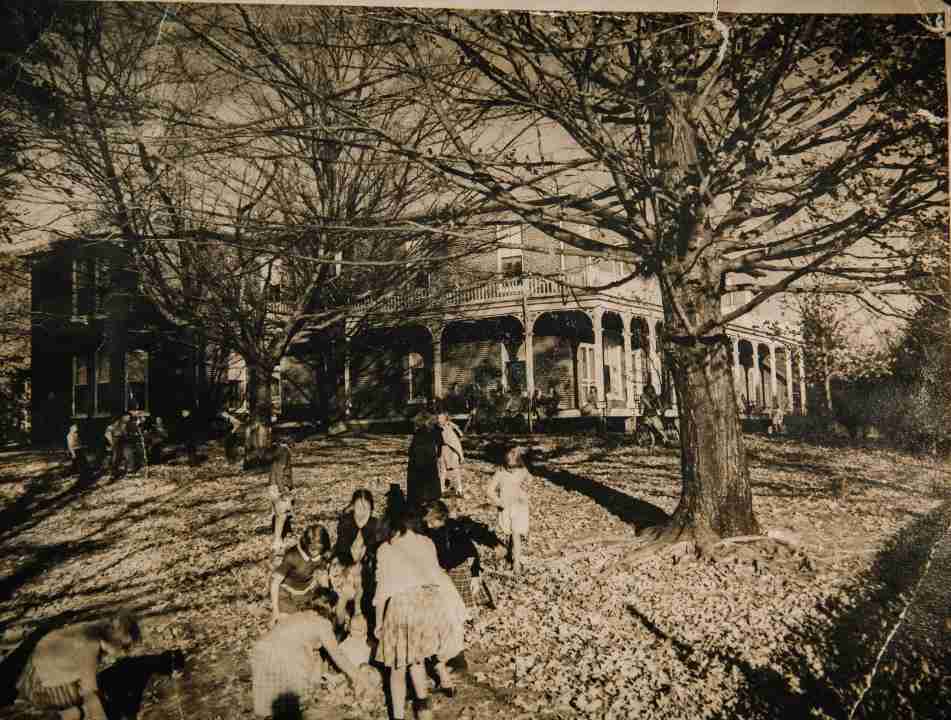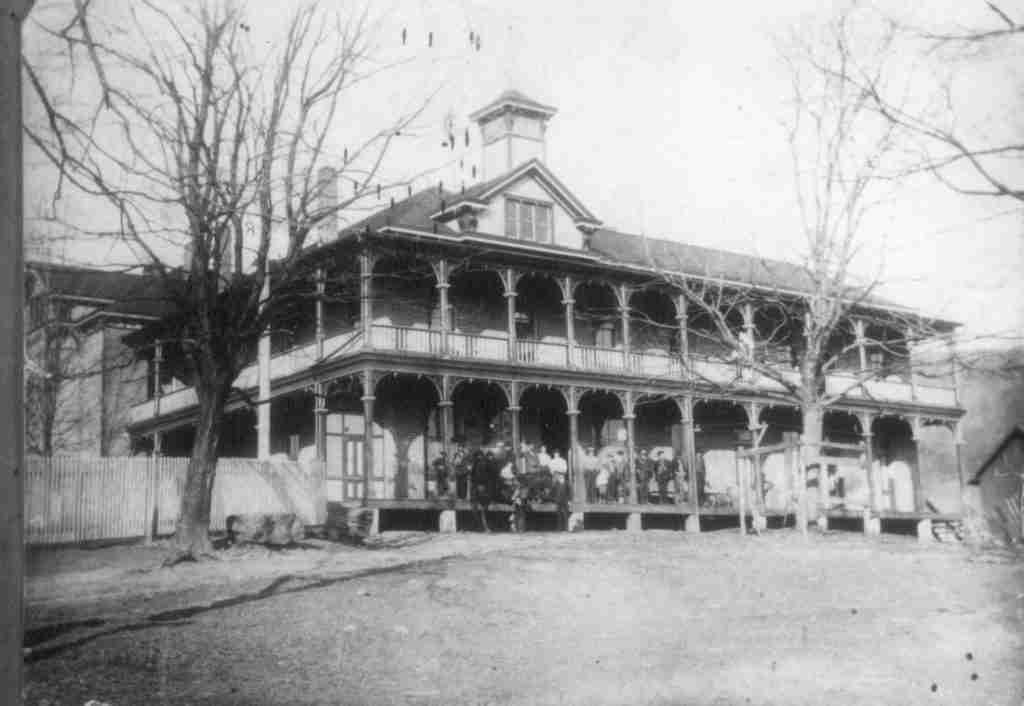Foster Falls Girls Industrial School: Suffering and Success

In the heart of Foster Falls, Virginia, an Inn sits high on a hill, surrounded by the Blue Ridge Mountains’ serene beauty and the New River’s rippling waters. The New River Trail passes by, a rails-to-trails success story that is a magnet for recreation.
The luxurious Inn at Foster Falls offers a serene escape, a far cry from its origins as an industrial school for girls. Today, guests enjoy plush accommodations, modern amenities, and the tranquility of the Blue Ridge Highlands. Yet, just over a century ago, this same site was a place of strict discipline and relentless labor, where young girls toiled under harsh conditions in the hopes of transforming their futures.
Here is the poignant tale of the Foster Falls Industrial School for Girls. It juxtaposes its current opulence with the stark reality of its past. Through the stories of the girls who lived, worked, and sometimes suffered within its walls, we explore the complex legacy of these institutions, shedding light on both the hardships endured and the successes achieved. Join me for a look at the history of a place that has witnessed profound change from a beacon of reform to a haven of luxury.
The Industrial School Concept
In the late 19th and early 20th centuries, industrial schools for girls emerged as part of a broader social reform movement, aiming to rescue impoverished, orphaned, or delinquent girls from the streets and shape them into “productive citizens.” These institutions blended reform schools, foster care, and prisons, to provide vocational training and moral education.
The Girls Who Qualified
The girls who found themselves in industrial schools came from challenging backgrounds. Many were orphaned or came from impoverished families unable to care for them. Others were deemed delinquent, having committed petty crimes or exhibiting behavior considered inappropriate for young women at the time. The criteria for placement were often subjective, influenced by societal attitudes towards poverty, urbanization, and gender roles.
Arriving at the School
Girls arrived at these schools through various channels. Some were sent by court order, deemed delinquent, or needing supervision. Others were placed by families unable to support them or by charitable organizations aiming to “save” them from a life of poverty and vice. The journey to the school was often traumatic, a stark transition from whatever semblance of home they knew to an institution that would control nearly every aspect of their lives.

Life Inside the School
The atmosphere in industrial schools was harsh and regimented. The institutions aimed to instill discipline and work ethic, often through strict routines and hard labor. The daily schedule was rigorous, starting early in the morning and filled with vocational training and primary education. Girls were taught domestic skills like housework, cooking, and sewing, alongside trades such as stenography and nursing.
Expectations for behavior were strict. The girls were required to adhere to a rigid code of conduct, emphasizing obedience and diligence. Punishments for infractions were severe, reflecting the broader societal belief in discipline as a path to moral and social rehabilitation.
Attempts to Escape
Unsurprisingly, the oppressive conditions led many girls to attempt escape. The rigid discipline, long hours of labor, and lack of personal freedom made life in these institutions unbearable for some. Escape attempts were frequent, a testament to the harsh reality of life inside the schools. However, successful escapes were rare, and recaptured runaways faced harsh punishment.
The Impact of the Schools
The impact of industrial schools on girls was profound and multifaceted. For some, the schools provided valuable skills and a path to employment, often as domestic servants or in low-wage industrial jobs. The vocational training and primary education they received enabled them to secure work and achieve a measure of economic stability. However, the success stories were often overshadowed by the systemic issues within the schools.
Many girls left the schools scarred by their experiences. The harsh discipline and prison-like conditions took a psychological toll. The focus on preparing girls for specific types of low-wage work perpetuated social and economic inequalities. These institutions, while well-intentioned, often reinforced the societal belief that certain segments of the population were destined for menial labor, limiting the girls’ opportunities for upward mobility.
Hauntings at Foster Falls?
Locations with a history of persistent traumatic events are often associated with ghostly activities. The theory is that intense emotional energy, such as the fear, pain, and sorrow experienced by the girls in industrial schools, can imprint on the environment. This energy can then play back like a recording, with people witnessing apparitions or hearing sounds related to the traumatic events.
The Inn at Foster Falls is no exception. One of the most persistent ghost stories involves sightings of a young girl in old-fashioned clothing, often seen wandering the halls and peeking around corners. This spectral figure is believed to be one of the orphans who lived in the building when it was the Children’s Home. Guests and staff have reported hearing disembodied footsteps, children’s laughter, and the unsettling feeling of being watched, particularly in the areas that once housed the school and orphanage.
Another story centers around the figure of a stern-looking woman, thought to be a former matron of the industrial school. She has been seen in various parts of the inn, often described as supervising or watching over the property. Some visitors have even claimed to feel a sudden chill or an inexplicable sadness in her presence.
These tales of hauntings contribute to the inn’s mystique, blending the site’s storied past with its current role as a serene getaway. For those intrigued by the paranormal, the Inn at Foster Falls offers a comfortable stay and a chance to connect with the lingering spirits of its history.

A Complex Legacy
The legacy of industrial schools for girls is complex. On one hand, they provided education and vocational training to marginalized young women, offering a way out of poverty and a path to economic stability. On the other hand, the conditions and expectations within the schools sometimes caused significant harm, leaving lasting scars on the girls who passed through their doors.
The tale of industrial schools for girls is one of both suffering and success. These institutions were born out of a desire to reform and rehabilitate. Yet, they often fell short of their lofty goals. The girls who lived in these schools faced harsh conditions and strict discipline, but they also learned skills that enabled some of them to build better lives. Their stories remind us of the complexities of social reform and the importance of balancing discipline with compassion.
As we reflect on the history of these schools, we must remember the girls who endured them. Their resilience and courage in adversity are a testament to the human spirit. While the industrial schools aimed to shape these girls into productive citizens, it was the girls themselves who, through their suffering and successes, shaped the legacy of these institutions.


Comments are closed.